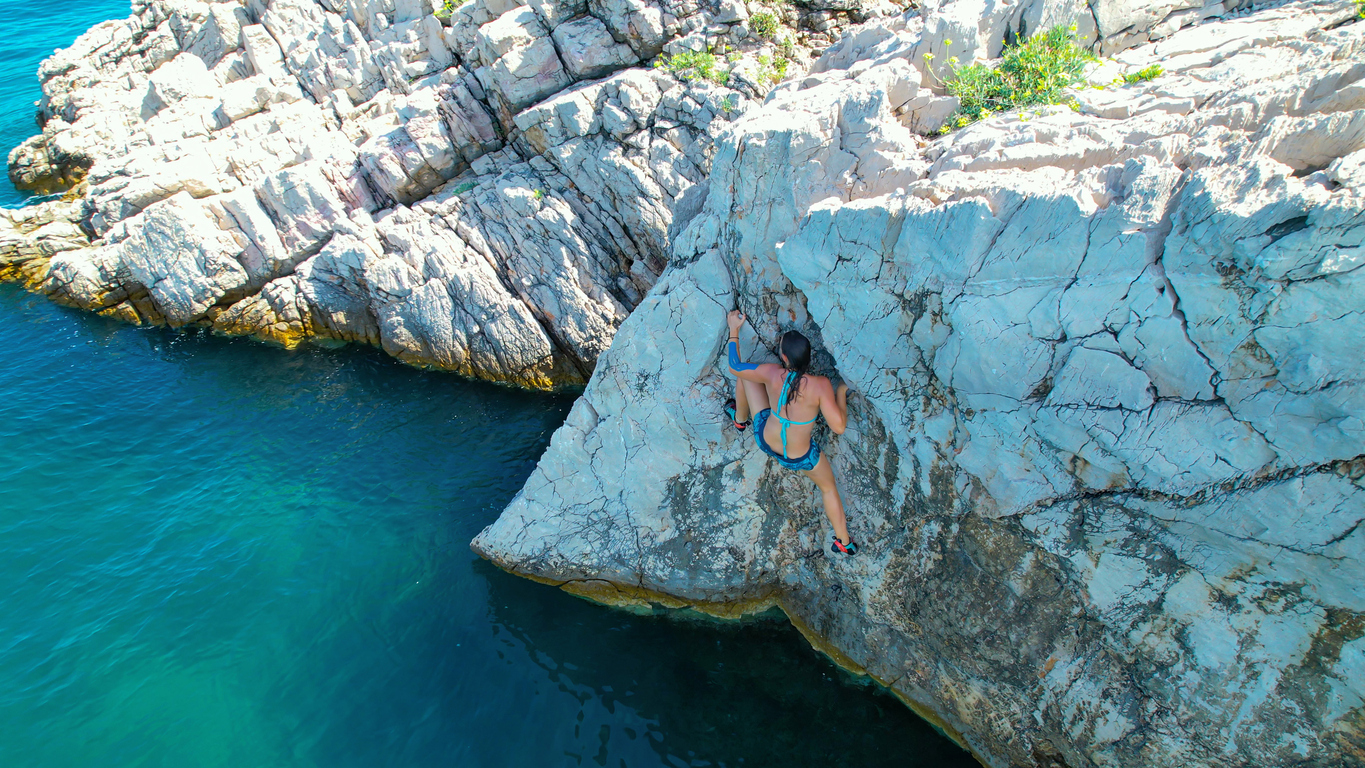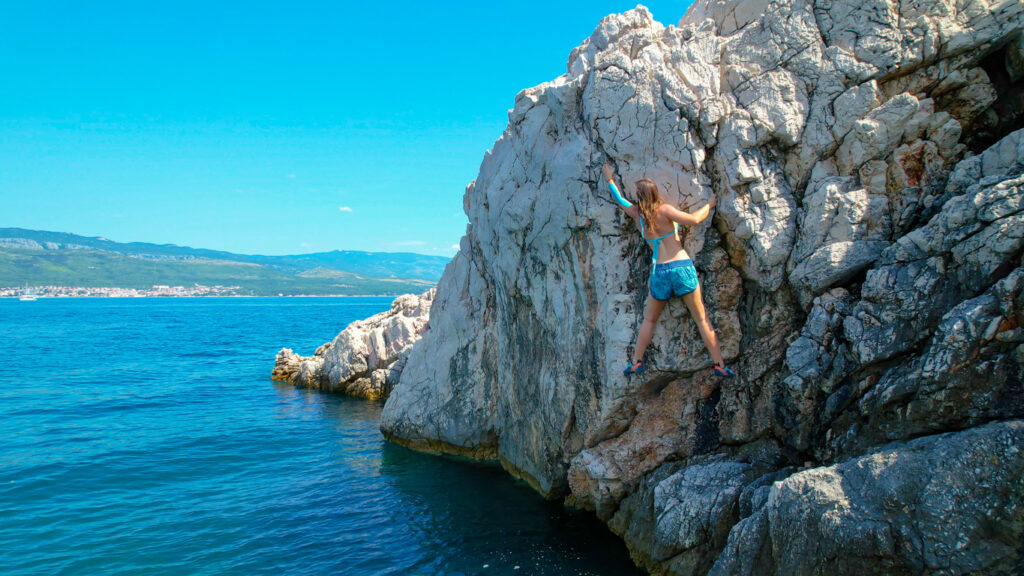5 Tips for Deep-Water Soloing in Central Texas
Need your climbing fix but it’s too hot outside? Deep-water soloing is the perfect solution for this summer in Central Texas.

It’s the end of a long week and you’re fed up with being stuck in your office under the fluorescent lighting. You want to climb outside to cleanse your soul, but the triple-digit temperature and humidity have you second-guessing going out to the Greenbelt.
As you’re contemplating if it’s worth it to embark upon #SUFFERFEST on a scalding summer day, the image of Chris Sharma deep-water soloing crosses your mind. You think to yourself, “Can you deep-water solo somewhere around here?”
If you’re a climber in Austin, the summer months can feel too hot to climb outside. However, Pace Bend Park, less than an hour away with just a $5 entrance fee, has deep-water soloing where you can get your climbing fix while enjoying the cold plunge into the water.

Before you go, there are some important things to consider. Follow these five tips to enjoy deep-water soloing that Central Texas has to offer:
1. Look Before You Leap
One of the most critical factors in ensuring your safety while deep-water soloing is making sure the water is deep enough to fall into. A quick Google search of “Lake Travis water levels” will give you a sense of which coves are climbable. Some coves — like Giles Cove, a popular cliff-jumping spot — need a minimum of 655 feet of water for a safe landing, whereas others — like Thrasher Cove — need a minimum of 685 feet of water for a safe landing. Even with safe water levels for deep-water soloing, you should always check your landings for submerged rocks, boulders and branches.
Note: Make sure to leave room for error when checking water levels. Just a 2- to 3-foot difference in water levels can be the difference between yelling, “Cannonball!” as you splash into the water or yelling, “Someone, call 911!” because a submerged boulder occupied the landing zone.
2. Wear Old Climbing Shoes
There was once a time when you could climb without shoes, but the infestation of zebra mussels with their razor-sharp shells now requires the use of footwear. An old pair of climbing shoes can do the trick. Nothing sucks the stoke out of climbing like a gash that makes you worry about a bacterial infection instead of being able to stay present on the wall. Pack a first-aid kit just in case.
3. Bring a Floatation Device
For the time that’s not spent climbing, conserve your energy by bringing a floatation device. This allows you to save your arms for climbing instead of burning the energy in your arms for treading water. As mentioned before, zebra mussels have become overgrown and can not only cut your skin but also your floatation device. Pack a zebra clam-resistant floatation device.
Fastening 2 to 3 pool noodles also works great if you’re on a budget. Paddleboards and kayaks work even better if you’re willing to splurge; just make sure they’re not the inflatable kind so that there’s no risk of a zebra clam slicing through them.
4. Warm Up
Like any physical activity, it’s crucial to warm up before you start deep-water soloing. Take the time to stretch your muscles and do some light exercise to get your blood flowing. This will help prevent cramps and injuries, which can be more severe if they occur while you’re climbing.
5. Climb with a Partner
Deep-water soloing has inherent risks, and it’s always a good idea to have a partner with you. Not only for the bigger risks like injuries and accidents but also for those smaller things you might overlook like dehydration and cramping. Thinking that you’re immune from these things and going without a partner can be life-threatening, so make sure you climb with a partner or go with a group.
–
Deep-water soloing can be an exhilarating experience, but it’s essential to know your limits. Don’t take unnecessary risks. If you feel unsafe, it’s best to stop the climb and come back another day when conditions are more favorable. Remember, safety should always be your top priority when engaging in any adventure sport. Lastly, this is a county park and we need to do our part to keep it clean. Leave no trace. If you pack it in, pack it out.
Happy Sending,
Q
About the Author
As a physical therapist who specializes in rock climbing injuries, Quang (Unu) Tran PT, DPT, FAFS has come across countless climbers who have been told to “stop climbing” because of an injury. He knew he needed to be a valuable resource for climbers where it’s just not feasible to stop climbing. For more information about exercises, stretches and warm-up activities to help keep your body healthy so you can continue to push your climbing limits, just visit CompleteClimber.com.






